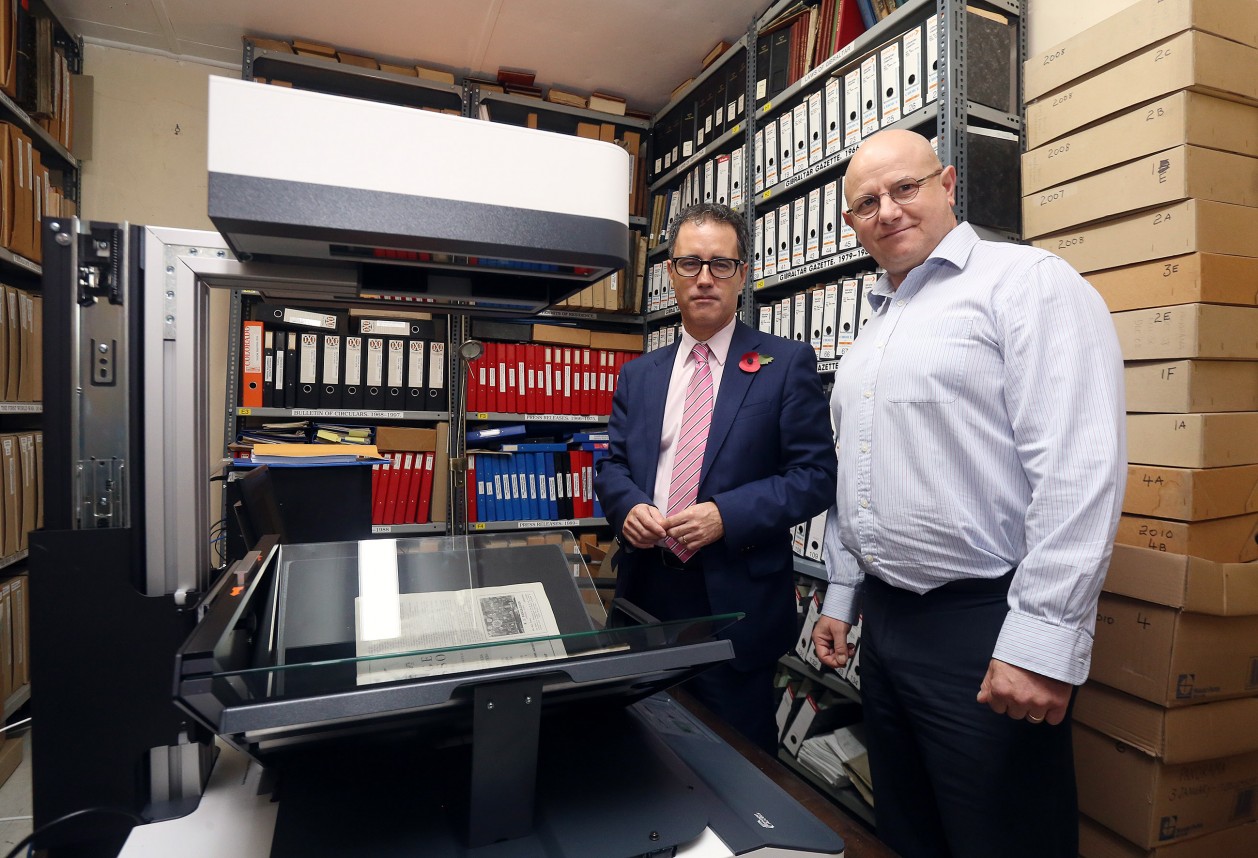New Scanner at the National Archives
 A new, highly-specialised, archival scanner has recently been installed at the National Archives.
A new, highly-specialised, archival scanner has recently been installed at the National Archives.
The scanner is a German machine costing 24,000 Euros, which was met in full by a grant from the Parasol Foundation Trust. The device will enable staff at the Archives to digitise documents such as newspapers, magazines, government files and books as well as images, maps and plans. The scanner has a search capability, thus making it much easier to carry out research on documents which, in some cases go back as far as the early 18th century.
The machine scans at up to 600 dsi (dots per square inch) and can handle documents as large as A1 in size. It is designed to protect the spines of old books and it has a special glass plate which protects the pages from both the scanner’s bright light and its laser beam. The whole machine is extremely robust and it has been designed to handle large numbers of files. ‘In a single hour, this machine has been able to scan all the copies of the El Mono newspaper from 1879 – over 260 double pages in all,’ said the Archivist, Anthony Pitaluga. ‘I am grateful to the Parasol Foundation Trust for their very generous donation,” said the Deputy Chief Minister, Dr Joseph Garcia. ‘This new machine will enable us to make a permanent digitised record of hundreds of historic documents. The search facility will be a very important asset, especially for those people who wish to carry out research.’
‘Preservation and digitisation of valuable historic documents, manuscripts and artefacts have always been part of my philanthropic agenda, as reflected in my support of projects at the Victoria & Albert Museum, Cambridge University and other national archives,’ said Ruth Parasol, the principal benefactor of the Parasol Foundation Trust. ‘Gibraltar is homebase for the Foundation and also me and my family office long term so such Gibraltar projects are important and fundamental for us. It is a privilege and a great honour to be able to support projects in Gibraltar and this project in particular which will enable future generations easy access to the historic facts that shaped Gibraltar over the years.’
